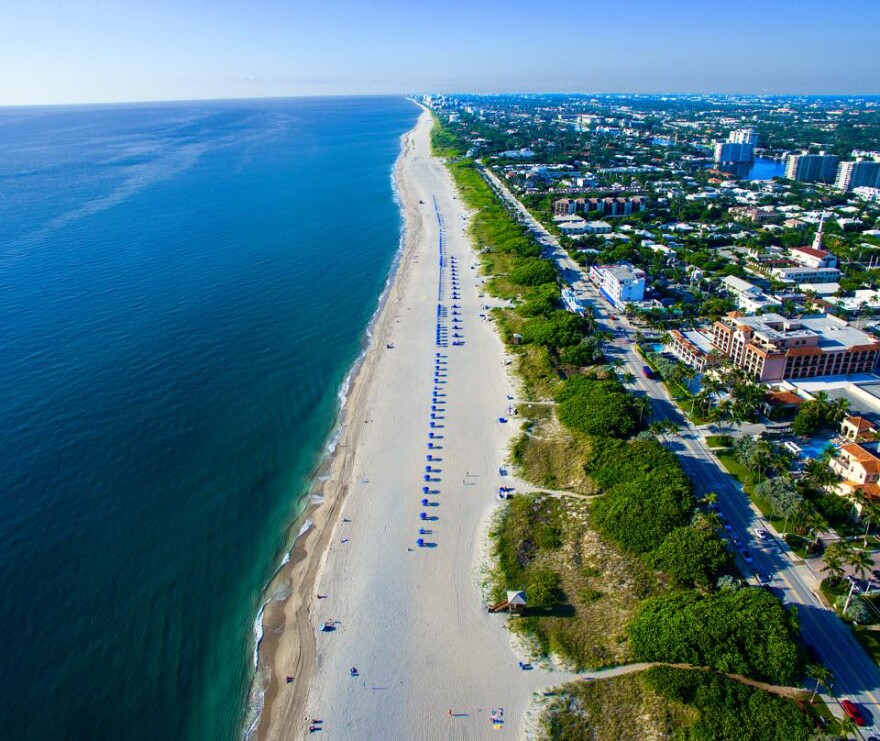TALLAHASSEE --- A new state report says Visit Florida provides a good return on investment, even as the tourism-marketing agency faced years of efforts by House leaders to shut it down.
Florida took in $3.27 for every dollar the state spent on tourism marketing over a three-year period, before cuts in funding for the agency and before COVID-19 sent the travel and leisure industries into a tailspin, according to the report released Monday by the Legislature’s Office of Economic & Demographic Research.
The return over three fiscal years that started July 1, 2016, was more than in the three preceding fiscal years, the economic research staff determined.
It helped that the state, with 1,350 miles of sunny shoreline and a variety of theme parks, was experiencing year-after-year tourism records, while lawmakers provided a “limited increase” in funding.
The research office found the estimated return, up from $2.15 per dollar in the prior three-year period, “is reflective of Visit Florida’s return in periods of strong tourism growth and state investments at their current levels.”
The report equated tourist spending to exports of products from the state.
“The more tourists there are, the more ‘exported’ goods and services there are. While the services purchased by tourists add only broadly to the economy, the goods they purchase have the additional ROI?value of being taxable in Florida,” the report said. “These purchases include lodgings at hotels, meals at restaurants, gifts at souvenir shops, tickets to amusement parks and Florida attractions and car rentals. All these goods are subject to state taxes, most to sales taxes.”
The report estimates Visit Florida from fiscal year 2016-2017 to fiscal year 2018-2019 helped generate $744.64 million in state revenue, $15.85 billion in state gross domestic product, and, on average, more than 25,000 additional jobs each year. During that period, the state pumped $227.99 million into the marketing agency, which teams with local tourism agencies to promote Florida across the nation and to foreign markets.
From fiscal year 2013-2014 to 2015-2016, with the state spending $210.5 million on Visit Florida, the tourism-related revenue was $453.2 million, and gross domestic product stood at $13.5 billion, putting the return on investment at $2.15 per each marketing dollar, the report said.
With the state putting $115.50 million into tourist marketing between fiscal years 2010-2011 and 2012-2013, the return on each dollar spent was $3.21, generating $343.4 million in revenue and $11.3 billion in gross domestic product.
“The analysis indicated that an average of 59.9 percent of all out?of?state tourists were influenced by tourism marketing during this period of review,” the report said. “In the prior analyses, marketing influenced about 57.3 percent and 54.5 percent, respectively. This increase is significant, changing the total number of visitors influenced by marketing, as well as the number that is attributed to Visit Florida.”
In 2011, state spending on Visit Florida stood at $35 million, while the tourist count was 87.3 million.
U.S. Sen. Rick Scott, who was governor from 2011 to early 2019, annually advocated for increased funding for Visit Florida.
However, he faced pushback from House leaders, in part because of controversial spending by Visit Florida that included sponsorships of London-based Fulham Football Club and an auto racing team, along with contracts with celebrity chef Emeril Lagasse and rapper Pitbull.
Former House Speaker Richard Corcoran, now the state education commissioner, often argued that people are driven to travel more by their personal finances than by state marketing. His successor, former House Speaker Jose Oliva, also was highly critical of using tax dollars for tourism promotion.
The economists attempted to factor into their estimates that Visit Florida’s marketing isn’t the only reason people travel to Florida.
The report noted that “income is the greatest universal determinant of tourism demand” but that tourists also consider travel costs and having friends or relatives to visit. For international travelers, who make up about 11 percent of Florida’s annual tourists, exchange rates also play a factor in determining where to travel.
Lawmakers in 2019 cut Visit Florida’s funding to $50 million after the amount hovered for years around $76 million a year. Visit Florida fired 44 of its 135 workers to carry out the funding cut.
The agency received $50 million for the current fiscal year, after House leaders in the 2020 legislative session sought to close the doors on the agency.
After drawing 118.4 million tourists in 2017, 127.1 million in 2018 and 131.4 million in 2019, the state estimated attracting 66.358 million tourists in the first nine months of 2020, a 34 percent drop from the first three quarters of 2019, due to COVID-19.



